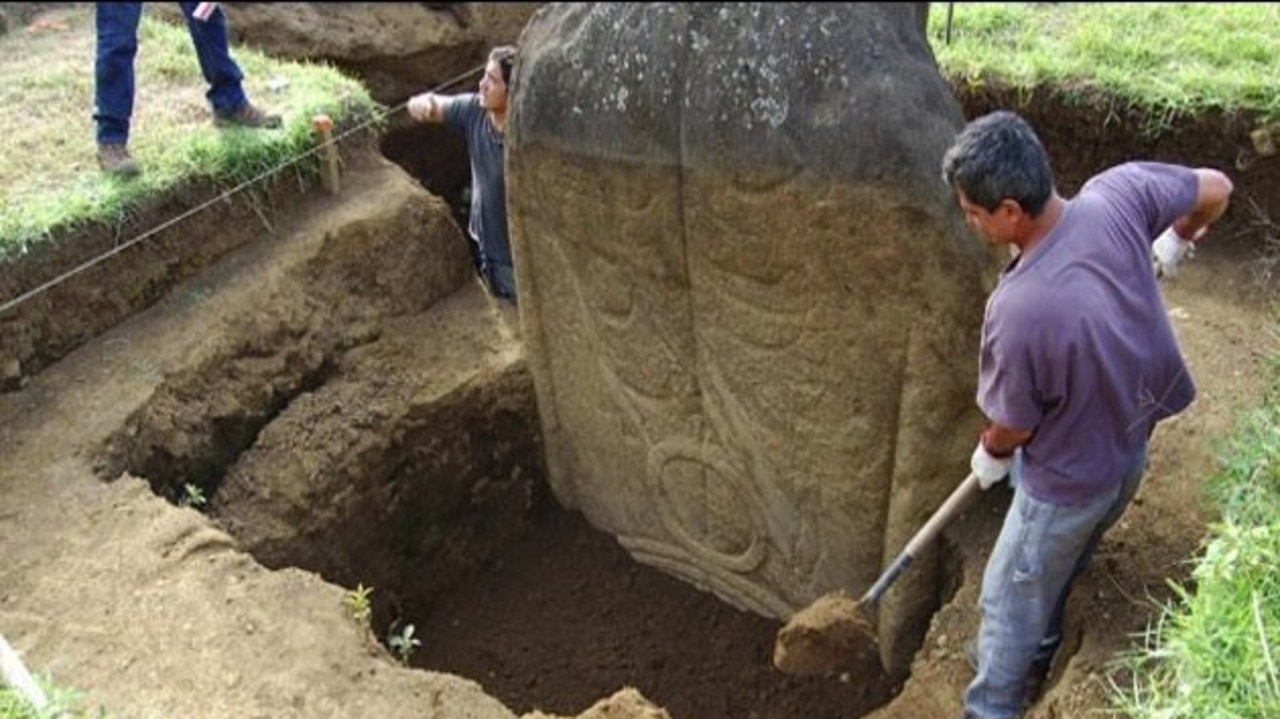Researchers uncover truth about Easter Island’s mysterious past
Just what happened to the ancient residents of the isolated island has long been shrouded in mystery, but new studies are shedding some light.

It’s one of the most isolated inhabited places in the world and has captured the imaginations of many.
Famous for its iconic megalithic stone statues of humans, Rapa Nui (Easter Island) is a stunning island located in the Pacific Ocean on the easternmost tip of the Polynesian Triangle, some 3700 kilometres from Chile.
Despite its remote location, archaeological and genetic evidence shows that Polynesian peoples from the west had already reached the island around 1250 ce.
Many theories have emerged about just what happened to the island’s ancient residents, the Rapanui people, over the years, but it has long been shrouded in mystery.
Now, a recent analysis of ancient DNA from 15 former inhabitants has moved researchers closer to uncovering the truth about the island’s past.
Their fresh research casts doubt on a popular theory that there was a societal collapse amongst the residents because they exploited their natural resources. The theory was popularised by historians including US author Jared Diamond in his book Collapse, with the event described as one of the first “ecocides” in history.
The theory was “presented as a warning tale for humanity’s overexploitation of resources,” the authors of a new study published in the journal Nature wrote.
The island was once covered in palm trees, and the claim was that the Rapanui deforested the area to support the culture of its more than 15,000 inhabitants.
This was believed to have sparked a period of famine and war that turned into cannibalism. It was believed to have eventually ended in a collapse both demographically and culturally.

The researchers noted in Nature that: “Resource scarcity would have led to the so-called Huri Moai cultural phase – a period of famine and war that would have escalated to the point of cannibalism and ultimately culminated in a population and cultural collapse in the 1600s, abruptly ending statue carving.
“This inevitably also put an end to the creation of new moai statues.”
There were just 3000 inhabitants estimated to have been left on the island by the time Europeans first reached it in 1722.
However, when the researchers – a team of experts from around the world specialising in population genetics – searched for signs of such a societal collapse, they found none.

The team used a statistical tool to reconstruct the genomic history of the locals, analysing the genomes of 15 Rapanui who lived between 1670 and 1950. Their remains are stored at the Musée de l’Homme, or Museum of Mankind, in Paris.
Instead, they found evidence of a steady, growing population.
“Our genetic analysis shows a stably growing population from the 13th century through to European contact in the 18th century,” study author Barbara Sousa da Mota of the University of Lausanne said.
“This stability is critical because it directly contradicts the idea of a dramatic pre-contact population collapse.”
The researchers noticed that at this point in time (1860s) slave raiders from Peru removed one-third of the island’s population by force.

“There is definitely not a strong population collapse, like it has been argued, a population collapse where 80 per cent of the population or 90 per cent of the population died,” study co-author J. Víctor Moreno-Mayar, an assistant professor of geogenetics at the University of Copenhagen’s Globe Institute in Denmark, said.
It was also revealed that the Easter Islanders had exchanged genes with a Native American population. This suggests the ancient inhabitants crossed the ocean to South America somewhere between 1250 and 1430. This is ahead of Columbus’ arrival in the Americas, and before the Europeans reached Easter Island in 1722.
The genomes of 6-11 per cent of those tested were traceable to coastal South American ancestors, with the two groups meeting an having offspring an estimated 15 to 17 generations before that of the individuals studied.

This research reinforced the results of a separate study which was published in the journal Science Advances in June.
The second study took a different approach, using satellite images to map out rock gardens on the island, however they both reached the same conclusion.
The research from June found that 0.76 sqkm of the island contained rock gardens, and the small harvest of sweet potatoes would have only supported around 4000 inhabitants.

That’s in contrast to prior research that had claimed the gardens covered a total of 21 sqkm – 12 per cent of the total 164 sqkm. Such an area would have been necessary to sustain more than 15,000 inhabitants.
The 4000 figure is close to the number of people Europeans first discovered living on Easter Island, which indicated a collapse never occurred.
“When we label an entire culture as an example of bad choices, or as a cautionary tale of what not to do, we had better be right, otherwise we feed stereotypes (which themselves have profound consequences on people),” Dylan Davis, a co-author of the Science Advances study, told AFP.
More Coverage
“In this case, the Rapanui managed to survive in one of the most remote places on Earth and did so fairly sustainably until European contact,” said the environmental archaeologist at Columbia University.
“This suggests we can learn something from them about how to manage limited resources.”
– With AFP





